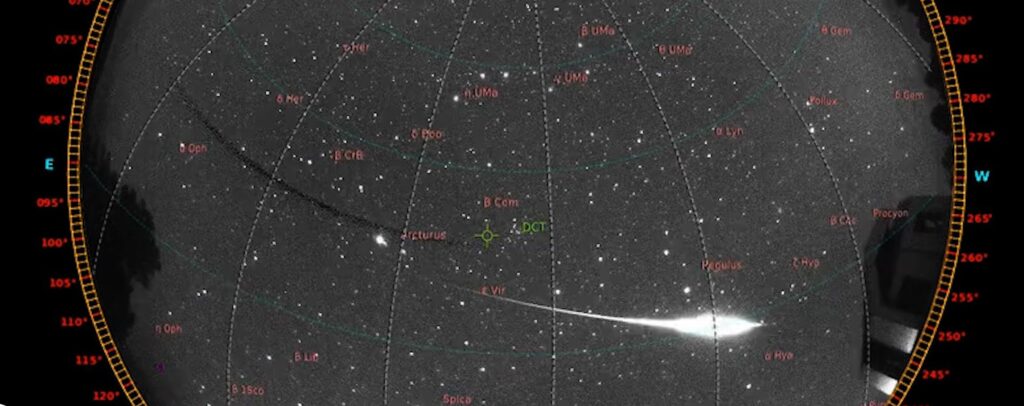
A Lyrids meteor, captured with Lowell Observatory's All-Sky Meteor Surveillance cameras (LO-CAMS).
By Madison Mooney
The Lyrid meteor shower peaks on the night of April 21 and the wee hours of April 22.
What is the Lyrid Meteor Shower?
A meteor is a piece of cosmic debris, such as rock or ice, that enters Earth’s atmosphere. Meteors can range in size from a tiny particle of dust to a large boulder. As the meteor falls through the atmosphere and burns up, it appears as a brilliant streak of light in the night sky. When Earth encounters many meteors at once, it’s called a meteor shower.
Meteor showers are named for the specific point in the sky where the meteors appear to originate. This location is called the radiant. The location of the radiant depends on the combined motion of the Earth and the path of the meteoroids themselves. The radiant of the Lyrids is near the bright star Vega in the constellation, Lyra, named for the Greek sun god Apollo’s harp.
How can I observe the Lyrid Meteor Shower?
The Lyrid meteor shower will peak on the evening of April 21st and the very early morning of April 22nd. Lyrids tend to be fast and relatively bright, with fairly good chances for bright fireballs. Lyrid meteor showers usually produce 10-18 meteors per hour at the shower’s peak, so catching sight of one may require some patience. However, dense clumps in the meteoroid stream can produce unpredictable outbursts, and these make the Lyrids worth watching every year.
The best time for viewing will fall between midnight and 4 AM. We recommend lying down on a picnic blanket in a dark area with a full view of the sky for the best viewing experience.
Join Lowell Observatory on Tuesday night, April 21st, for a live stream of the Lyrid meteor shower, hosted by astronomer Dr. Nick Moskovitz. We’ll use the All-Sky Camera at the Lowell Discovery Telescope to hunt for meteors together. After that, you’ll be ready to find more on your own, when the Lyrid meteor shower peaks in the hours before dawn.